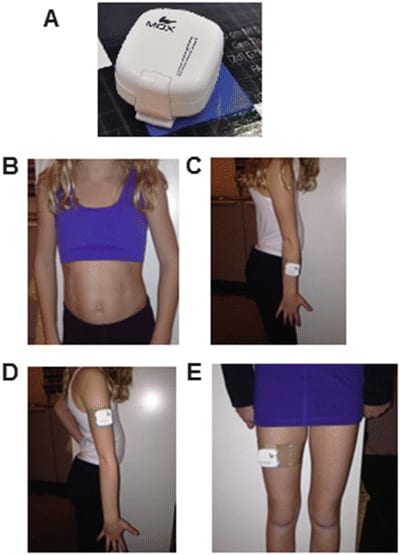A group of researchers designed an explorative study to test the feasibility, reliability and validity of the MOX accelerometer (Maastricht Instruments BV) in measuring daily physical activity in children with mitochondrial disease (Koene et al., 2017).
Mitochondrial disease
Mitochondrial disease is a genetic condition of either inherited or spontaneous mutations that lead to altered function of the mitochondria (“energy factories”). This results in a failure to produce enough energy for parts of the body to work properly. As a consequence, it can lead to different symptoms and a whole host of other complications.
The parts of the body that are most affected are often those that require the greatest amount of energy for human function such as the heart, brain, muscles and lungs. While the onset of mitochondrial disease can occur at any age, it primarily affects children. Lack of energy and tiredness are among the most serious complaints experienced by children affected by a disturbance of the mitochondrial oxidative phosphorylation system.
The challenge with studying the effects of mitochondrial disease on energy and activity levels
Studying the effects of the mitochondrial disease on tiredness and reduced exercise tolerance is a challenge as commonly used endurance tests are difficult or impossible to execute by this patient group. Moreover, studies in a laboratory setting do not always reflect disabilities experienced during activities of daily living in the home environment. In addition, many children find questionnaires relating to their level of tiredness or level of physical activity difficult to follow or complete. Therefore, an approach to obtain continuous activity measurement in the child’s natural environment may better reflect the level of habitual physical activity.
An experimental approach
By using accelerometers, the movement measured in accelerations is translated to movement intensity and orientation of body parts. A set of four or five sensors was used. The four accelerometers were attached to the chest, dominant lower arm and upper arm and upper leg. If the patient used a wheelchair, a fifth accelerometer was attached to the wheelchair. The domains of physical activity over a weekend were compared to healthy age and sex-matched peers.
Feasibility was defined as the reliability of data acquisition and user experience reported by the parent when using the accelerometers. Reliability was tested using the patient’s diary, and the quantity of data obtained during the time the accelerometer was worn. Validity was assessed by visually correlating video images with the patient’s diary.
Highlights of the study
Children with mitochondrial disorders have lower peak activity rather than a lower amount activity compared to healthy peers.
Accelerometry-based approach is a promising method to investigate the domains of physical activity that are abnormal in children with mitochondrial disease. The method is safe, feasible and well tolerated in home-based studies. The reliability and sensitivity of accelerometry in detecting differences in children with mitochondrial disease for future studies needs to be studied in more detail.
References
Koene, S., Dirks, I., van Mierlo, E., de Vries, P. R., Janssen, A. J. W. M., Smeitink, J. A. M., . . . de Groot, I. J. M. (2017). Domains of Daily Physical Activity in Children with Mitochondrial Disease: A 3D Accelerometry Approach. JIMD reports, 36, 7-17. doi:10.1007/8904_2016_35
The flexibility of the wireless MOX accelerometer greatly facilitates clinical research or interventions, and can be tailored to the specific needs of patient groups and caregivers.
Contact us to find out more!


